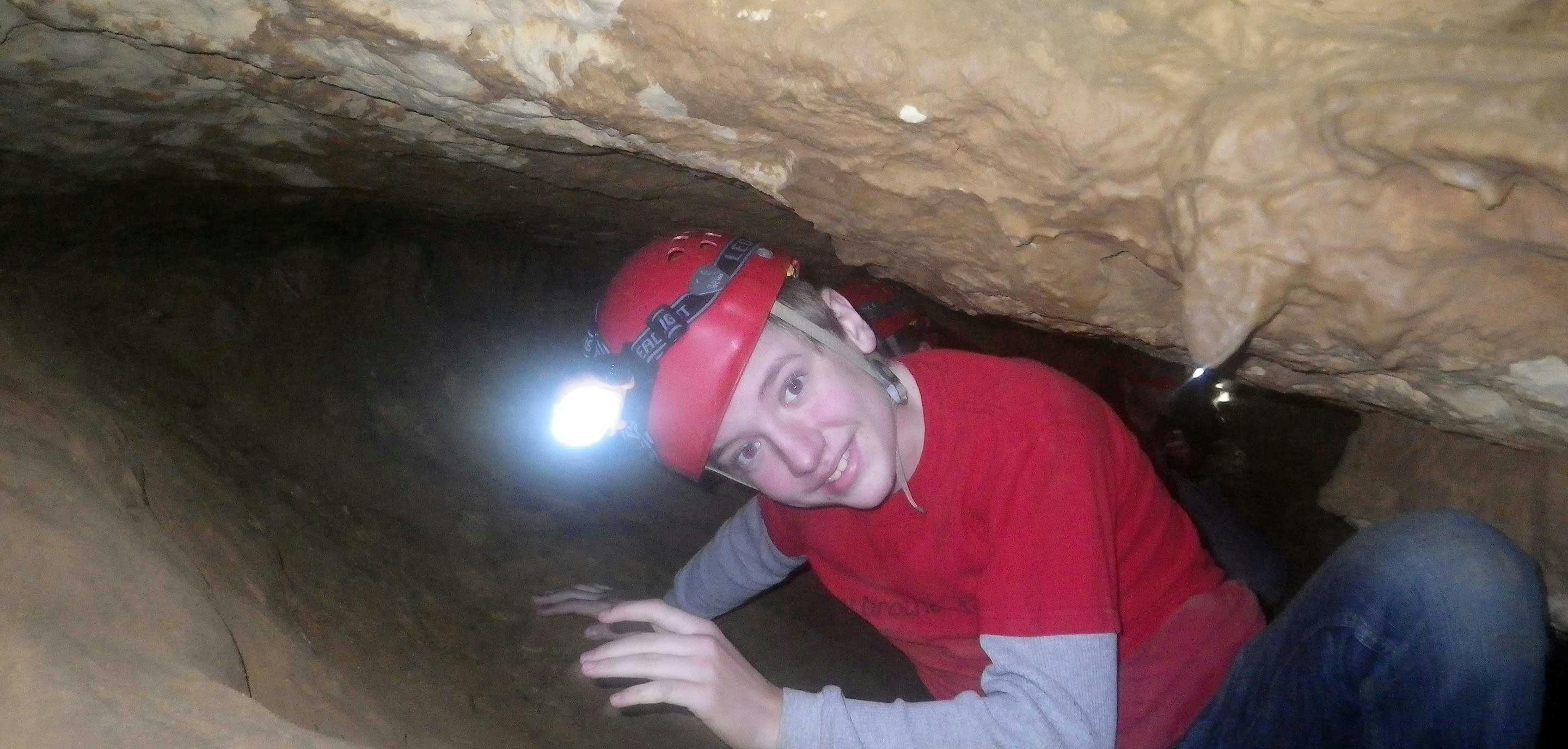Caving Safety
Basic Caving Safety
Cave exploration provides a sense of adventure and is an increasingly popular sport among young people and adults. Indiana has 2,640 caves; 800 are located in two Southern Indiana counties, Harrison and Crawford.
Commercial caves have guided trips suitable for all ages. However, trips to non-commercial, wild caves should probably be limited to 7th grade and up. In addition, beginners should limit themselves to horizontal caves—avoiding vertical caves where climbing becomes necessary.
Plan safe, be safe, and leave safe.
Safety Guidelines
Before attempting any cave exploration, take the time to learn the basics and always follow established safety rules and guidelines. Experience the wonder of an underground adventure–safely!
Always tell someone where you’re caving and when you expect to return. Make sure they have directions to the cave. Your cell phones does not work underground.
If the cave is located on private property, first obtain the landowner’s permission.
NEVER go caving alone. There should be at least three in the group, and one should be an experienced caver.
Stay out of a cave that is prone to flooding if there is threatening weather. Caves can flood quickly.
Don’t run, jump, show off, or fool around. Proceed cautiously and watch where you’re stepping.
Avoid piles of rubble or anything that looks unstable. Falling is the #1 cause of caving accidents!
If you get stuck, don’t panic. Remember that exhaling before pushing can be helpful.
Never leave an inexperienced caver alone. All members of the party should remain in earshot of each other.
Leave your keys hidden in a safe place outside the cave or inside the cave mouth. Several people should know where to find them.
Lock your vehicle(s).
What to Wear?
Clothing
The average temperature in Indiana caves is between 52 and 55 degrees. Caves are often wet and slippery. In addition, rock strewn floors can make walking difficult. Suitable clothing and foot ware will help make your caving experience a pleasant one.
- Always wear sturdy hiking boots that provide good support and traction.
- Wool socks are recommended.
- Wear knee pads in case crawling becomes necessary.
- If you wear glasses, make sure they are secured. Leave sunglasses in vehicle.
- Wear proper clothing to prevent hypothermia. Long pants and a long sleeved shirt are best.
- Make sure your clothing is tucked in and secure. This minimizes your risk of getting caught in a “pinch” or tight spot.
- Bring a complete change of dry clothes suitable for surface weather (Very important in winter). Leave them inside vehicle or stashed just inside the cave. Pack them in a large gargabe bag–which can then hold your muddy clothes on the ride home.
- Some cavers also recommend gloves.
Be prepared for anything!
Equipment Tips
Caving equipment is generally not terribly expensive and only a few basic items are required. (This does not apply to vertical caving where climbing gear becomes necessary.) Remember to check all equipment BEFORE entering the cave.
- Wear a sturdy helmet with chin strap at ALL times! A fixed light should be mounted on your helmet as this keeps your hands free.
- Always have 2 additional light sources, such as waterproof flashlights. One could be ducktaped to your helmet. The other could be stored in a pocket or pack.
- Always have extra bulbs and batteries.
- While we’re on lights, don’t shine your light in other cavers’ eyes.
- If group is large, a whistle could be a prearranged signal that will quickly and easily get everyone’s attention.
- Always have a heat source (in case of an emergency). This could be a candle and waterproof matches carried in a pack.
- Take a heat tent, a large trash bag. (This can easily be stored under your helmet.) If needed, simply poke a hole in the bottom and slip it over your head.
- Always have a first aid kit.
Be mindful of the world you’ve entered.
Ecosystem Conservation
Cave ecosystems are fragile and easily damaged. When exploring a cave, disturb as little as possible. Always strive to leave the cave as you found it—so others can continue to enjoy it long after you are gone!
- Don’t break formations. For the cave’s sake and your head’s. Be especially careful in low places.
- Don’t remove and carry out formations that are already broken.
- Don’t paint, mark, or deface the cave in any way.
- Don’t disturb or harm any creatures in the cave—especially bats.
- Don’t use tobacco in the cave as it can harm cave creatures.
- Don’t urinate or defecate in the cave.
- Don’t leave behind any garbage, candy wrappers, or etc. Remember: If you carry it in, carry it out!
Here’s the down low on food basics.
Food Rules
- No alcohol.
- Take one liter water (or more) per person.
- Do not drink cave water (unless desperate) since it can contain germs, sewage, animal wastes, and pollutants.
- Take high energy snack foods. Candy bars, granola bars, and trail mix are good examples.
- Keep all your food and water in sturdy waterproof pack.


Follow us
JOBS MEDIA CONTACT